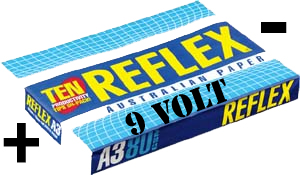
Researchers at California’s Stanford University have conducted a series of experiments to create nanotub-coated paper capable of holding a charge.
Paper’s fibrous structure makes it suitable to hold carbon nanotubes connected by silver nanowires that are deposited on to the paper in the form of an ink, turning it into a capacitor that can take and discharge electricity up to 40,000 times – much higher than lithium-ion equivalents.
It also benefits from being a robust substrate, capable of being bent and even folded.
Yi Cui, assistant professor of materials science and engineering at the university, said: “Society really needs a low-cost, high-performance energy storage device, such as batteries and simple supercapacitors.”
“This technology has potential to be commercialised within a short time,” added Peidong Yang, professor of chemistry at the University of California – Berkeley.
“I don’t think it will be limited to just energy-storage devices,” he said. “This is potentially a very nice, low-cost, flexible electrode for any electrical device.”
Cui said he expected applications for the technology to include a system to balance electricity grids, which will save excess energy generated during off-peak hours for peak use.
Paper batteries may also find a home in applications such as electronic elements of printed products. Last year, the US edition of Esquire published 100,000 copies of the magazine with a built-in digital screen on the cover.
Read the original article at www.printweek.com.
Comment below to have your say on this story.
If you have a news story or tip-off, get in touch at editorial@sprinter.com.au.
Sign up to the Sprinter newsletter
